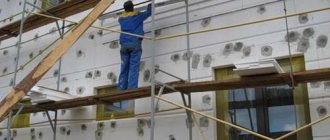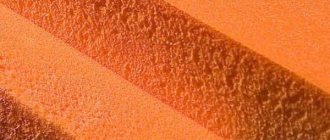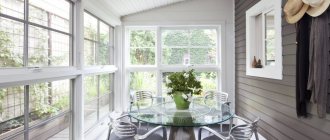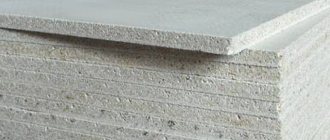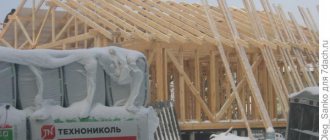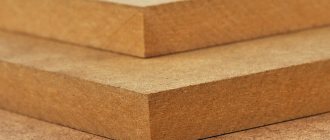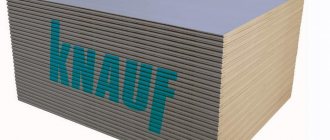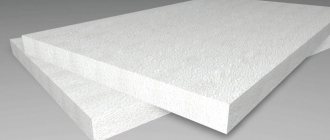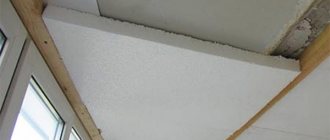A balcony or loggia can be used with different effectiveness.
For example, turn it into a warehouse for abandoned things sent there as unnecessary, or turn it into a full-fledged room in which you can spend time in summer and winter. At the same time, before starting finishing, it is very important to properly insulate the balcony, using modern, practical and high-tech materials. Such as polystyrene foam, the technical characteristics of which make it possible to achieve a high level of thermal insulation with minimal financial costs.
What is this?
Styrofoam balls
First, let's answer the question, polystyrene foam: what is it? The term polystyrene foam or expanded polystyrene usually means a white insulating material consisting of many balls of a cellular structure with air inside. It is produced by the method of thermal foaming of polystyrene granules with simultaneous exposure to a blowing agent.
Its cells, with the air mass enclosed in them, which is in a static state, have the shape of polyhedra with walls 0.001 mm thick and dimensions 0.2-0.5 mm. Due to this structural feature, foam plastic consists of almost 98% air, due to which it has excellent thermal insulation characteristics.
The main technical parameters of this insulation can be presented in the following table:
Indicators Units of measurement Foam grades according to GOST-15588-86152535 Density kg/m311-1516-2525-35 Compressive strength at 10% linear deformation, not less than MPa 0.070,180.25 Thermal conductivity in dry condition at 25±5°C, not more than W/(m*K)0 ,0380.0380.038 Humidity, no more than%1 Period of independent combustion, no more than seconds4 Water absorption during the day, no more than%2
Three questions that concern buyers most
Fire safety. Is the insulation burning or not?
The answer to this question is clear: yes, it burns. Perhaps it is this feature that prevents the widespread spread of Penoplex. However, on the building materials market, there are products marked “G1” and “NG”, which means low-flammable and non-flammable material.
In this case, antiperen is used - a substance that prevents the spread of fire. It is worth noting that it is spread, not fire. Of course, for Penoplex to ignite, a fairly high temperature will be required, however, the essence is the same: the material is flammable!
Do mice chew insulation boards?
The material does not contain natural substances and therefore cannot attract rodents. However, this feature does not prevent mice and rats from chewing the insulation, making nests there and breeding offspring. To avoid these problems, a fine mesh is installed over the insulation.
By the way, Penoplex does not attract insects and is neutral to the appearance of mold and mildew.
Is polystyrene foam harmful to health?
In principle, Penoplex is an environmentally friendly material, provided that the material is created without violating production technology. However, given that we are talking about an artificial material, chemical components can evaporate under the influence of certain factors, for example, prolonged exposure to direct sunlight. Therefore, Penoplex is not found on the walls in its pure form and is always covered with finishing materials.
In addition, when the material burns, it releases acid vapors, carbon dioxide and other dangerous substances, including hydrogen chloride. Accordingly, in the event of a fire, there is a direct threat to human life.
Hexobromocyclododecane, which is a bioaccumulative toxin and is currently permitted in our country, but has been prohibited for use in the European Union since 2015, can be used as a flame retardant.
Properties and characteristics of foam plastic
The main properties of polystyrene foam include:
Polystyrene foam has very low thermal conductivity, which makes it an excellent insulator used in various stages of construction production. However, along with an increase in the density of the material, these characteristics change somewhat upward. Moreover, it can be used in the temperature range from -50 to +75 degrees.
- Sound insulation and noise absorption
Due to its cellular, porous structure, polystyrene foam has some soundproofing properties, which increase with increasing thickness. However, it cannot be called a good sound insulator, since the noise absorption effect when using it is very low (only -4 dB).
- Vapor permeability, water absorption, humidity
Even when completely immersed in water, the foam absorbs a very small amount of it. Therefore, this insulation is well suited for thermal insulation of underground structures and foundations.
- Resistance to temperature fluctuations, fire resistance
Polystyrene foam belongs to materials of flammability class 3-4. The spontaneous combustion temperature of this insulation is +491°C, which is 1.8 times higher than wood (+260°C) and 2.1 times higher than paper (+230°C).
Expanded polystyrene boards that contain a fire retardant (contains the letter C in the marking) do not support combustion well and, if the combustion source is localized in a timely manner, can completely go out within a few seconds. The flammability class for them has been reduced to G2-G1. However, over time, these properties of polystyrene foam may deteriorate, as well as the fire safety rating.
- Resistance to various types of chemical and bacterial influences
Considering the technical characteristics of polystyrene foam, it should be noted that the material is highly resistant to a wide range of chemicals.
It is well preserved during prolonged contact with solutions of various salts (which allows it to be used in sea water), soap compositions and bleaches (hydrogen peroxide, hypochlorite, etc.), acids (the exception is concentrated nitric and acetic acid), gypsum, water-soluble adhesives, bitumen, lime, etc.
Due to its synthetic origin, this insulation is not affected by bacteria and pathogens. This observation is confirmed by practical experience: after 18 months of observing the foam during operation in a subtropical climate, the most favorable for the development of fungi and bacteria, absolutely no traces of bacterial damage were detected on it.
However, at the same time, polystyrene foam boards can be destroyed under the influence of rodents and termites. Also, direct ultraviolet rays, certain types of varnishes and solvents, such as toluene, acetone, and benzene, have a negative effect on the foam.
Despite its relatively low density, averaging 0.015-0.05 g/cm3 (For comparison: the density of water is 1.0 g/cm3), foam plastic has fairly high compressive and tensile strength.
Therefore, it can be operated under significant loads. In particular, one of the areas of application of polystyrene foam is the construction of runways at airports. Moreover, the strength of the foam directly depends on the thickness of its sheets and the correctness of their installation.
- Environmental Safety
Expanded polystyrene is one of the neutral materials that, during its use, do not emit poisonous and toxic substances into the environment that are harmful to human health.
Thus, the technical characteristics of expanded polystyrene comply with technological standards for new generation insulation materials and it can be called a universal insulator, suitable for internal and external thermal insulation of various types of premises.
The technology for insulating a loggia with polystyrene foam is described in our separate article. And you will learn about the characteristics of polyurethane foam as insulation from other material on the site. Read about how to make an infrared heater yourself here.
Taking into account the width
An indicator no less important than length. And for the same reasons. It is inconvenient to work with a large-width slab in interior spaces or on the roof if the width of the slab is greater than the distance between the rafters. The use of small-width material increases labor costs during installation and increases the number of fasteners. Don't forget about the safety of those working at heights. As a result, the sheet may break due to the low mechanical stability of the foam.
Insulation of increased linear dimensions significantly increases the wind load on installers.
The width of the expanded polystyrene board ranges from 50 cm (0.5 m) to 130 cm (1.3 m). The standard spacing is 5 cm (0.05 m). Permissible deviations in width are:
Dimensions, thickness, brands, density
Polystyrene foam is available in the form of white sheets, which can have different thicknesses, widths and lengths. In this case, the main parameter when choosing it is the thickness of this insulation, ranging from 20 to 100 mm.
Note: Expanded polystyrene sheets can have standard factory sizes or be produced to order.
Depending on the tasks, foam plastic of different thicknesses is used
The standard dimensions of a foam sheet are 1000 mm in length and 2000 mm in width. However, manufacturers produce slabs in other sizes. The most common option: 1200x600 mm.
Foam sheets with parameters 1000x1000 are also available for sale; 500x500; 1000x500 mm. In addition, upon individual request, you can order polystyrene foam, the sheet dimensions of which are 900x500 mm, etc., as well as purchase individually cut material that best suits the customer’s needs.
In accordance with the density of polystyrene foam, it is usually divided into several main grades, differing in strength and thermal conductivity.
The lowest density, 15 kg/m3, is the material marked PSB-S 15. It has minimal weight and is usually used for insulating places where people are temporarily located (in cabins, construction cars, etc.).
The more popular brand is PSB-S 25, with a sheet density of 25 kg/m3. This type of foam is used for exterior finishing of structures and structures of various types, including thermal insulation of roofs, floors and building facades.
Very dense expanded polystyrene grade PSB-S 35 is used in the manufacture of sandwich panels and reinforced concrete structures constructed using permanent formwork, and foam labeled PSB-S 50, the density of which is 50 kg/m3, is used in road construction and flooring of cold storage warehouses etc.
One of the thinnest insulation materials
The benefits of insulation using expanded polystyrene are difficult to overestimate. However, one of the most significant of them is its thickness. This means that the product has practically the lowest thermal conductivity coefficient.
The only material that foam plastic is inferior to is penoizol, which is a multicomponent liquid material. However, it can only be used for insulating non-residential structures.
The reason for this is the high toxicity of the material. In addition, only professional builders can work with foam insulation, but with the help of polystyrene foam, anyone can complete the finishing independently.
Advantages for insulating balconies and loggias
Taking into account the above, polystyrene foam, the properties of which allow this material to be used in different weather conditions, is well suited for work on insulating various premises, including balconies and loggias of urban apartments.
For external and internal insulation of walls, floors and ceilings in these rooms, sheets of expanded polystyrene brand PSB-S 25 with dimensions of 1000x1000 and 1000x500 mm are most often used. They are easy to work with due to the minimal number of joints during installation.
Advantages of polystyrene foam:
The use of polystyrene foam on the balcony
Low cost.
The use of this material allows you to reduce the cost of landscaping a balcony or loggia, without losing the quality of the thermal insulation. High thermal insulation characteristics. In terms of its thermal conductivity, a sheet of foam plastic 80 mm thick corresponds to 100 mm of mineral wool, 274 mm of wood, 760 mm of brickwork and 1720 mm of concrete. Thus, with its minimal weight, it provides a sufficient level of thermal insulation for the balcony without creating additional load on the load-bearing parts of the structure. Ease of use.
Polystyrene foam is easy to carry, cut and install, so it is well suited for insulating various surfaces of balconies and loggias, including their outer parts. Safety to use. Polystyrene foam has excellent antistatic characteristics and does not absorb moisture, which distinguishes it from another popular insulation material - mineral wool. It is also environmentally friendly and non-toxic material.
Below is a short video showing the foam production process.
- Date: 03/12/2015 Comments: Rating: 42
Expanded polystyrene has another more common and well-known name for many - polystyrene foam. Its appearance has also been known for a long time. This is a lightweight material that floats on water because it has air chambers inside its white balls.
They are what give the material its unique properties. It has its flaws. It is fragile and flammable.
Expanded polystyrene is a gas-filled material that is made from polystyrene and is used as insulation.
The manufacturer produces it in sheets of different lengths, widths and thicknesses. The last parameter is the main one in choosing this material.
The thickness of the product can be from 20 to 100 mm. This material is very popular among builders. It is used to increase thermal insulation during bricklaying with solid bricks.
Pieces of foam plastic are placed under plywood, which is used to finish the floor under parquet or laminate. They can be used to insulate walls from the outside while finishing the walls with plasterboard. Most often it is used from the outside.
Foam sheets can be standard or custom sizes.
Scheme of production of expanded polystyrene.
The length and width of the standard sheet are 1000, 2000 mm.
The manufacturer can cut products into other non-standard sizes. You can often find sheets of 1200x600 that meet the needs of the buyer and are in good demand. This can be a sheet with dimensions of 500x500, 1000x1000, 1000x500 mm.
On order, you can receive a batch of expanded polystyrene with sides of 900x500 or 1200x600 and other sizes, which does not contradict the standards. GOST allows cutting products 10 mm smaller if its length is over 2000 and its width is 1000 mm. In thickness for slabs up to 50 mm, a difference of ±2 mm is allowed, and over 50, a difference of ±3 is allowed.
If the length is not suitable for the buyer, then companies selling such products offer individual cutting. Length and width are important only for transporting building materials from the manufacturer to the customer. The main role is given to the thickness of the material.
The symbol for slabs according to GOST consists of letters and numbers, which includes:
Technical characteristics of various brands of expanded polystyrene.
- Slab type. Brand. Sheet dimensions. Standard designation.
If the sheet has such characteristics as a plate of foamed polystyrene with the addition of fire retardant grade 15, 1200 mm long, 600 mm wide and 40 mm thick, then the entry will look like this: PSB-S-15-1200x600x40 GOST 15588-86.
If the foamed polystyrene board does not contain a fire retardant and is grade 15, and its dimensions are the same, then the entry will change and look like this: PSB-15-1200x600x40 GOST 15588-86.
Using the technical requirements according to Gosstandart, foaming polystyrene containing a blowing agent: isopentane or pentane is used for the manufacture of foam boards. The residual monomer styrene is added to the total mass.
Polystyrene foam size chart.
On the surface of manufactured slabs ready for sale there should be no bulges or depressions more than 3 mm wide and more than 5 mm high. Dullness of the ribs and corners may be observed, but not more than 10 mm from the apex of the right angle.
The sides of blunted corners may have bevels no longer than 80 mm. All sheets of expanded polystyrene have the correct geometric shape. Deviation from the plane of the edge is allowed no more than 3 mm for every 500 mm of its length.
The difference in diagonals for slabs up to 1000 mm long should not exceed 5 mm, from 1000 to 2000 mm - no more than 7 mm is allowed, from 2000 mm - no more than 13 mm.
When accepting a batch, linear dimensions, correct geometric shape, and appearance are always checked.
The consumer can be sure that in the batch he purchased, all products will have the same dimensions.
Return to contents
Expanded polystyrene packaging diagram.
Cut polystyrene foam, ready for sale, is packaged by the manufacturer in transport bags and transported. GOST allows transportation unpacked if there is a guarantee that the sheets will not be damaged in transit.
When forming a package, the requirements of GOST 21929-76 must be observed. The height of the formed package should not be more than 0.9 m. With a slab thickness of 500 mm, the package is formed from two slabs.
On the side edge of the product or package there must be a marking containing the quality control department stamp of the enterprise that manufactured this product, the type and brand of the plate.
Labeling must be carried out in accordance with GOST 14192-77 and contain the name of the enterprise or its trademark, the date of manufacture of the product, its name and batch number. The brand and type of slabs and their quantity in the package are indicated.
There must be a designation of the standard on the basis of which these products were manufactured.
Return to contents
Several main brands of polystyrene foam are used for insulation. Each brand differs in its density, which is expressed in kg/m³. The higher the density of expanded polystyrene, the lower its thermal conductivity and higher strength.
The most common brand of polystyrene foam sheet is PSB-S. The numbers in the marking indicate the density. So, PSB-S 15, which is at the very bottom of the density table, has only 15 kg/m³.
It is the lightest, it is used for insulating places of temporary residence of people: cabins, carriages, as well as containers for heat preservation. This brand is used for insulation in warm areas with mild winters. It is used to decorate walls to reduce the sound insulation of interior partitions.
Application of various brands of polystyrene foam.
The most popular brand of foam plastic is PSB-S 25 with a density of 25 kg/m³. Expanded polystyrene sheets of this brand, having different sizes, are used for insulation of buildings, structures, and structures. Polystyrene foam is used to improve the quality of thermal insulation and sound insulation of walls, roofs, floors, and facade insulation.
Expanded polystyrene is used for the manufacture of panels and reinforced concrete structures, which are used in frame houses.
Sandwich panels and reinforced concrete structures, which are created using permanent formwork, contain in their construction polystyrene foam grade PSB-S 35 with a density of 35 kg/m³. Such products, in addition to their main functions, provide excellent waterproofing of walls.
PSB-S 50 with a density of 50 kg/m³ is used for arranging the floor of refrigerated warehouses, heated soils, and in road construction.
Return to contents
This durable, moisture-resistant insulation is used for outdoor work. To insulate a wall with polystyrene foam, you first need to determine what density, size, and type of polystyrene foam you will need for the job. The choice depends on the expected loads that this material will bear during operation.
When insulating a vertical wall, the loads will be minimal; sheets of any brand will do. Even PSB-S 15 will give the same result as PSB-S 25 when it comes to wall insulation in areas with mild winters. This is due to the fact that the principle of operation of the foam is based on gluing polystyrene balls, between which and inside there are multiple air chambers.
It is known that the less mass and more air, the better the thermal insulation effect. It is inconvenient to work with low-density sheets, which are more fragile and break. PSB-S 25 has a higher density, making finishing easier.
Properties of expanded polystyrene.
Expanded polystyrene 25 is often used for external insulation of walls of non-residential premises.
They are used to decorate balconies, loggias, garages, shopping centers, and various institutions. For northern regions with cold winters, it is believed that a sheet thickness of 5 cm is enough to keep the room warm on the coldest nights. Polystyrene foam grade 100 is used for thermal insulation of industrial freezers, as well as for insulation of houses in the harsh climate of the Far North.
A sheet size of 10 cm will ensure maximum thermal protection. When choosing a brand of expanded polystyrene, you can choose a sheet that has various parameters. A non-standard sheet 500x500 is sometimes much more convenient to work with than a standard long one with dimensions of 2000x1000 mm.
For insulating the walls of a house, sheets measuring 1000x1000 and 1000x500 mm are suitable. They are convenient to work with and result in fewer joints that will have to be sealed hermetically. To fill smaller areas, existing sheets are cut into suitable pieces.
In all non-standard situations in finishing, it is better to use a sheet of large sizes to make it easier to cut configurations. During the installation process, such sheets are adjusted to the required parameters by cutting polystyrene foam into pieces. This material is easy to cut.
Expanded polystyrene, having dimensions of 2000x1000 mm, is more difficult to install. When working alone, it is easier to lay two sheets of 1000x1000 each than one sheet measuring 2000x1000 mm.
Expanded polystyrene is a popular material in the construction market because its thermal insulation ability is much better than that of other building materials. It ensures long life for buildings in any climatic conditions.
Comparing its thermal conductivity with other materials, we obtain the following results: 80 mm thick foam is equivalent to 100 mm of mineral wool, 274 mm of wood, 760 mm of brickwork and 1720 mm of concrete. This characteristic and low cost make this material especially popular in construction.
Low thermal conductivity, minimal water absorption, frost resistance and resistance to rotting are just a small part of the advantages of extruded polystyrene foam. Thanks to all these qualities, the material stands out among other thermal insulation options and is widely used in construction.
Reference: structurally, EP is a flexible sheet of closed cellular polystyrene. They are obtained by extruding (pushing) polystyrene foam through special holes under the influence of high pressure and temperature. This provides increased strength and thermal insulation properties.
Thermal conductivity.
The thermal conductivity coefficient is 0.03 watts per meter per Kelvin. Low thermal conductivity allows the material to be used in residential construction and even for laying wells or insulating the roofs of private houses. Water resistance. The smallest closed cells in the structure of the material minimize water absorption of the material.
Even if you completely immerse the slab in water, the liquid will only get into the side honeycombs, which are in the open state. The photo shows the water resistance of extruded polystyrene foam. Frost resistance. Extruded polystyrene foam is excellent for Russian conditions due to its high frost resistance. The operating temperature range is -50 – 750C.
EP does not lose its performance properties even with multiple frost-freeze cycles. Durability and reliability. The service life of the material varies within 50 years or more depending on the specific application. At the same time, EP is not subject to rotting and does not support biological activity, reducing the risk of mold and mildew to zero. Low vapor permeability.
For comparison: a slab with a thickness of 20 mm is similar in vapor permeability to a layer of roofing felt. High density, which is 15-200 kg/m3. Economical. The low cost of the material allows you to insulate a building for little money and create a comfortable indoor microclimate. Environmental friendliness. Despite the chemical basis, the composition does not contain components harmful to health, making the material suitable for insulating residential buildings and medical institutions.
At the same time, when burning, it does not emit harmful fumes, which makes it fireproof. The photo shows the environmental friendliness of extruded polystyrene foam. High strength. For compression within 18,000 kg/m2. The specific indicator depends on the density and thickness of the material. Resistance to external influences.
The material is resistant to water, saline solutions, acids, alkalis, alcohol and other chemicals. Easy to use. Expanded polystyrene is easy to install, does not crumble and does not emit dust. And the light weight of the sheets does not require special equipment for unloading and installation.
At the same time, the material can be installed both at the construction stage of the facility and during the finishing of premises. Versatility. The material is suitable for waterproofing basements, foundations, thermal insulation of buildings, and construction of enclosing structures. It is actively used for thermal insulation of refrigeration and freezing systems, isothermal vans and ice arenas.
On video extruded polystyrene foam:
The disadvantages of the material include poor resistance to acetone and turpentine, some brands of varnishes and drying oil, as well as ultraviolet radiation. However, this can be solved with the help of special protection for the material.
Another disadvantage of polystyrene foam produced by extrusion is its low sound insulation performance. The proper value for this parameter can only be obtained when using thick sheets, so for noise protection you will need to use other materials.
You may also be interested in learning how to glue polystyrene foam to concrete. But what are the properties of polystyrene foam and expanded polystyrene and where can it be used. This article will help you understand. This article will help you understand what polystyrene foam underlay under laminate is and where it is used: https://resforbuild.ru/paneli/utepliteli/vidy-podlozhek-pod-laminat.html
What are the best polystyrene foam ceiling tiles and where can they be used? This article will help you understand.
Do-it-yourself technology for insulating external walls with polystyrene foam
A craftsman familiar with the basics of finishing work can insulate walls.
Let us consider in detail the insulation method called “wet facade”.
Tools
For work you will need hand and power tools:
- level, plumb line, hammer, tape measure, pencil, hacksaw (knife), trowel and spatula;
- bucket for stirring glue and plaster;
- hammer drill or impact drill with bits or drills for concrete;
- whisk attachments for drills for preparing solutions.
From consumables purchase:
- glue for polystyrene on a cement or synthetic basis;
- dowels with a rod length 4-5 cm greater than the thickness of the foam;
- mounting foam or adhesive foam;
- foam gun.
Work progress step by step
Wall insulation begins with preparatory work:
calculating the amount of insulation and its purchase;
- preparing and checking instruments;
- purchases of consumables;
- installation of scaffolding (if necessary).
The work is carried out in the following sequence:
- The surface of the walls is prepared and cleaned of dust and dirt.
- The voids in the seams (if any) are sealed with cement mortar or foam.
- Level the surface with plaster so that unevenness does not exceed 1.5 - 2 cm. This will make it easier to fit the sheets and reduce the amount of expensive glue during further finishing.
- At a level of 50 cm from the ground, a support bar is attached strictly horizontally, if the foam is not placed to the ground, but finishing is provided with another material.
- Using a level and plumb line, markings are made.
- Apply a sheet according to the markings and through it (to avoid mistakes) drill a hole in the wall for the dowel.
- Starting from the central hole, fix the sheet to the wall.
- The second and subsequent sheets are placed offset (in a checkerboard pattern).
- The seams are sealed with polyurethane foam. Remove excess sealant after complete hardening, usually after 12 hours and up to 24 hours.
- Using a special toothed roller or other available means, punctures up to 0.5 - 1 cm deep are made on the surface of the foam for better adhesion to the layer of adhesive plaster.
- A 1-2 mm layer of specialized polystyrene foam adhesive is applied to the foam plastic, which is leveled with a spatula.
- A fiberglass mesh is applied to the glue and “sunk in.” The joints are overlapped, overlapping by 10 cm. The seams between the sheets and the edges of the mesh should not coincide.
- Level the glue with a spatula. By adding portions of glue in the right places, the final leveling of the surface is carried out, working as if using putty.
Finishing
After the composition has dried, prime the surface with products for external use.
The final finishing is carried out with facade paint or bark beetle plaster. The latter option is preferable, as it hides inaccuracies and irregularities, which are especially visible in side lighting.
There are no tricks when it comes to frame insulation. The foam is secured with wide-headed dowels between the frame slats. The remaining voids are filled with polyurethane foam or adhesive foam. Then, without fail, a waterproofing membrane is nailed to the frame. It is convenient to do this with counter-lattice bars, the thickness of which is 1-1.5 cm. After installing the siding or other material, there will be a gap between it and the foam, which will reduce the likelihood of dampening of the materials - the facade will become “ventilated”.
Selecting the size and thickness of the EP
The length of the sheets of extruded polystyrene foam is 1200-2400 mm, the width is 500-600 mm, and the thickness is 20-150. To select a specific value, it is recommended to start from the scope of application, for example, for thickness, the following tips:
- for the floor on the first floor - from 50 mm; for the second floor and above - 20-30 mm; for additional sound insulation on the floor - 40 mm; for internal wall cladding - 20-30 mm; for external wall cladding - 50-150 mm.
The video shows the characteristics of extruded polystyrene foam in comparison:
Specific thickness values for various thermal insulation works are presented in SNiP. You can also find online calculators on the Internet that allow you to calculate the thickness for specific tasks.
Help: depending on the density, several classes of material are distinguished - 31, 31C, 35, 45C, 45.
Class 31 and 31C are used to insulate structures that are not subject to load - foundation walls, inverted roofing, sewerage. Models 35 are characterized by increased fire safety, so they can be used for roof insulation. Class 45 has superior compressive strength, making it an ideal material for load-bearing structures such as basement roofing, runways and foundations.
Where is Penoplex made? Reliable manufacturers you can trust
Penoplex is produced in Russia, so the material is sold in an affordable price segment. If we talk about brand representative offices, you can pay attention to the following cities:
- Kirishi . The production line has been operating since 1998, specializing in the production of standard size insulation. Currently, there are four lines involved. Total capacity up to 600,000 m3 annually.
- Perm branch . The plant was launched in 2005. Now, this is the most productive enterprise, supplying the market with about 650,000 m3 annually.
- Novosibirsk . The enterprise was launched for residents of the Siberian region of the country, specializing in the production of Penoplex with increased thermal insulation and water resistance.
- Taganrog . The plant produces about 500,000 m3 of insulation annually and, accordingly, fully supplies the residents of the Southern and Central regions with products.
It is worth noting that the products of these branches are subject to mandatory certification and undergo multi-stage quality control at all stages of production.
Share the post “Standard sizes of Penoplex. Types and characteristics. Comparison with analogues." by copying the link: https://kaksdelatsvoimirukami.ru/standartnye-razmery-penopleksa/
Comparison of different types: URSA XPS, TechnoNIKOL
Brand Description "Technonikol" and "Technoplex" Durable and reliable insulation, suitable for industrial and civil construction. It is used for insulation of walls, roofs, foundations, as well as in the creation of sandwich panels. The thickness in the model line varies between 20-120 mm. Classification of models: for floors, walls and balconies in apartments - XPS "Technoplex", for road construction - Carbon Solid, for industrial and civil construction - Carbon Prof and Prof Slope, for cottages and private houses - ECO, Carbon ECO SP, Carbon FAS, Carbon DrainURSA XPSDifferentiated by the lowest thermal conductivity and increased environmental friendliness among analogues.
Can be used for both heat and steam, hydro and sound insulation. The service life is 50 years or more when used in external thermal insulation. Penoplex is distinguished by a variety of edges - from straight to tongue-and-groove, which makes it easier to adjust and install the slabs. Temperature range is -50 – 800С
But how to use TechnoNIKOL foam adhesive for polystyrene foam and where exactly it can be used is described in great detail in this article.
It will also be interesting to know which polystyrene foam adhesive for outdoor use is best
This information will help you understand how to use extruded polystyrene foam or polystyrene foam correctly and where it can be used.
But how you can paint foam ceiling tiles and how this can be done correctly is described in great detail in this article.
It will also be interesting to learn about how to use penoplex plaster.
We cut carefully
To fill the remaining areas and when insulating protrusions and window openings, it is necessary to cut foam plastic to size. The question is: “How to cut and what to cut with?” does not arise. Trimming can be done with a construction knife, a fine-tooth hacksaw, a mechanical or thermal cutter.
Using knowledge of the characteristics of expanded polystyrene and its dimensions in the calculations, at the end of the work you can find that there is no waste left. Every ruble spent will pay off in reduced heating costs.
Application area
When insulating a house from the inside, it is necessary to increase the thermal insulation of the following structures:
- in the construction of the basement floor on the ground, if the underground floor is heated;
- in the floor pie of the first floor when installing a cold basement or underground;
- exterior walls;
- ceiling above the top floor when installing a cold attic;
- covering when installing a warm attic;
- attic roof.
Of all these parts, polystyrene foam for home insulation is best used in wall construction. In floors, foam plastic should only be used in conjunction with joists, which will take the main load from the floor, furniture, etc. The thing is that the density of polystyrene foam does not allow it to withstand high compressive loads.
Floors with foam plastic without joists can be used for technical purposes - attic floors, etc. Therefore, if you want to efficiently insulate the floor under the screed, the best insulation option is extruded polystyrene foam. The insulation on top should cover a layer of cement-sand screed 50 mm thick with additional reinforcement. For reinforcement, a mesh of reinforcement with a diameter of 3-4 mm is used.
Another area of application of foam plastic is the production of permanent formwork for concreting. This insulation is used in the construction of strip foundations. Allows you to reduce the number of stages of work on pouring a monolith at home and at the same time perform thermal insulation of the structure. Reliable waterproofing must be provided on top of polystyrene foam.
How long will it last
Foam plastic is resistant to moisture and aggressive substances of organic origin, so the service life before replacement is, according to manufacturers, 700 freeze-defrost cycles.
This is significantly longer than the service life of the plaster layer, in which, in addition to the composition itself, the polymer mesh is destroyed. Based on the recommended operating parameters, you can expect the service life of external foam insulation to be from 20 to 40 years. It all depends on the quality of the building materials and the careful work carried out.
Insulating the walls of a house with polystyrene foam is one of the available ways to save heat in winter and coolness in summer. A simple installation process that anyone can master makes insulation with foamed polystyrene a popular method that allows significant savings on the purchase of materials and wages for builders.
